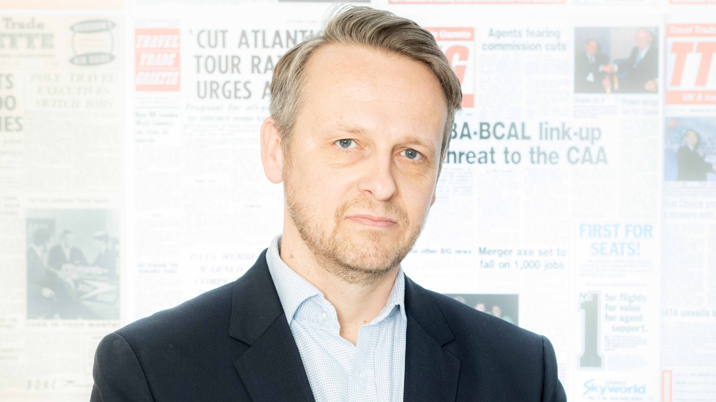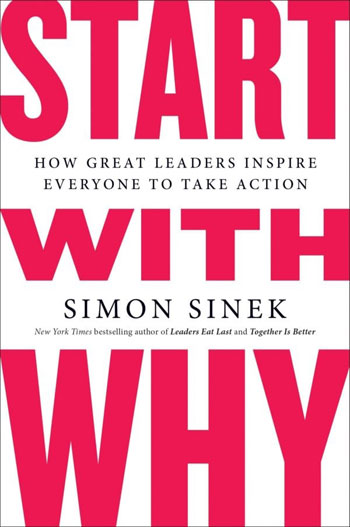
Sinek says, according to Wikipedia, people are inspired by a sense of purpose (or “Why”), and that this should come first when communicating, before “How” and “What”. Sinek calls this triad the golden circle, a diagram of a bullseye … with “Why” in the innermost circle (representing people’s motives or purposes), surrounded by a ring labelled “How” (representing people's processes or methods), enclosed in a ring labelled “What” (representing results or outcomes).
So how does TTG fit into Sinek’s triad?
Why
In 2018, influenced by Sinek’s book, TTG embarked on a major research project essentially looking at their raison d'être. One of the key outputs of this project was a new mission statement – For smarter, better, fairer travel. For anyone with a jaundiced view of mission statements, the problem with them is not mission statements per se, it’s what you do with them. TTG’s is featured prominently across all their outputs, and, says Daniel: “having such a clear purpose really helps us as a team and what we’re working towards.”
How
Travel Trades Gazette launched as a print weekly in 1953, and the controlled circulation ad-funded model was essentially how they did business for the first 65+ years of existence, and in recent times, this approach was reflected in an open-access website.
With the long term decline in advertising, and before the pandemic, Daniel and his team were beginning to rethink how they delivered on their “smarter, better, fairer travel” mission, based on the realisation that “too much of our revenue was inconsistent” and that what was needed was recurring revenue streams.
The result was the decision to gradually transition from a totally free offering into more of a membership business, with the unveiling last autumn of TTG+. It had been in the pipeline for a while, says Daniel, but its launch was brought forward by the pandemic.
The main driver of this is a registration barrier (with lots of newsletter and alert sign-up options included) that stops you reading anything before registering and then once registered, up to five free articles a month assuming you’re logged in (no content is served to non-logged in users), with lots of opportunities and prompts for you to take out membership before you hit your five articles limit: “Would you like unlimited access to our trusted and award-winning content? Join TTG+ today from £5 a month.”
“Our content does have a value and we shouldn’t be embarrassed to ask for it,” he says. Having said that, it is indeed a bold move and he advised, “it’s extremely important not to suddenly put up a paywall”. You have to work hard to develop a series of clear member benefits and experiment to find the optimal point at which to ask for money.
TTG initially offered seven free stories a week, but has since reduced that to five a month, which has “sped up conversion”.
It’s a big switch, but has proved rewarding and not just from a revenue perspective: “everyone’s mindset across the business changes when you become a subs business”.
For other publishers considering a free-to-paid transition, Daniel’s top tips are: 1. Talk to your market, and not just your best clients; 2. Research how other publishers have done it. 3. Don’t be too timid about where you draw the free articles limit. 4. Invest in your tech stack – it’s got to be able to deliver. 5. Don’t give away too much for free. 6. Don’t expect overnight success: switching to a membership offering is a long-term game.
What
Despite the change in revenue models, at a certain level, much of what TTG produces has stayed the same: print magazine + website + events + awards.

But dig a little deeper and there have been significant changes to TTG’s output. Shortly after the pandemic struck, the print magazine, which remains controlled circulation, went digital only, then changed frequency to fortnightly, then relaunched last September as a print monthly. A trajectory that partly reflected the turmoil the pandemic inflicted on the travel industry but also partly Daniel’s determination not to do things “half-heartedly”. If being a print monthly was the future, then it had to be a “true print monthly” and they had to make it the best version of its new self: cue redesign, heavier paper, perfect bound, rethought-through editorial and telephone-reverified mailing list.
The pandemic led to a switch to virtual events and a large expansion in their number and frequency, in particular half-day seminars. The pandemic also saw TTG take on a more campaigning role, bringing competitor titles together (#onetravelindustry) to bring maximum pressure on government (#savetravel) to give the travel industry sector-specific support.
Business self-help books like Sinek’s are only as effective as the willingness of the reader to apply the lessons to their business. But, combine a visionary book with a receptive mind, clarity of thought and a determination to commit fully and intelligently to a course of action, and the results can be exhilarating.
The good news is that it’s never too late to work out ‘why’ you’re in business; TTG, after all, dates back to the fifties.
Having such a clear purpose really helps us as a team and what we’re working towards.

You can hear Daniel Pearce being interviewed by James Evelegh on a recent episode of The InPublishing Podcast, which was sponsored by AdvantageCS, a leading global provider of subscription and membership management software.
This article was first published in InPublishing magazine. If you would like to be added to the free mailing list, please register here.










